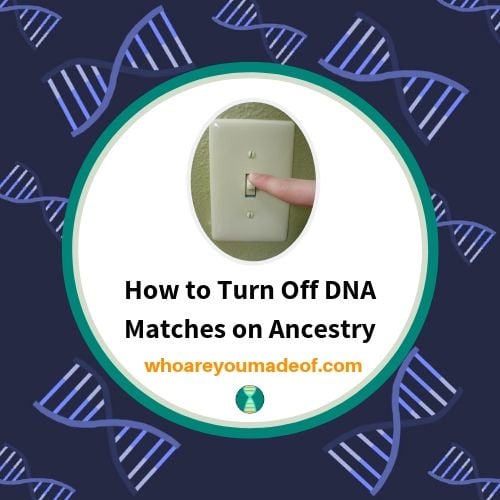
So I’ve taken to nicknaming this the Timber Effect. (No, the mother is not the parent related to the said 2C1R.) Additionally, from prior experience any Matches to the above siblings who have results at both AncestryDNA and FTDNA (whether they transferred or tested directly at FTDNA) all show more cM in common at FTDNA than at AncestryDNA. In general this didn’t make sense to me because the mother of the three siblings was directly tested at both Ancestry and FTDNA and came up as the mother with FTDNA saying they had more cM in common than AncestryDNA said.

When the results were in - NONE of the three tests showed up as a match! I can see why Sibling C and Sibling A might not show as a match (possibly no segment at least 7 cM) but I thought Sibling B would show up at the very least. Second Cousin, Once Removed tested directly at Family Tree DNA a couple months ago. (All four were tested prior to the AncestryDNA chip change.)Īfter the May 2016 change 24.0 cM across 4 segmentsĪfter the May 2016 change 35 cM across 5 segmentsĪfter the May 2016 change 13.1 cM across 3 segmentsĪn Autosomal Transfer was done for all three siblings to Family Tree DNA where again they all showed as sibings with FTDNA saying they had even more cM in common than Ancestry DNA said. Over at AncestryDNA I have three siblings tested (yes, they test as siblings to each other) each shows a match to a second cousin, once removed - documented by papers and family-gatherings and DNA according to AncestryDNA. I understand the randomness of atDNA inheritance and I’ve seen your Shared cM Project estimates but … Does the same apply to Second Cousin, Once Removed?

(Also see “ Are There Any Absolutes in Genetic Genealogy?” for more). There are claims out there, but they are completely unsupported at the current time. This is especially true when testing two people who are second cousins or closer, as t here has NEVER been a single demonstrated case of second cousins or closer who fail to share DNA. Let me re-phrase that: no one has ever demonstrated second cousins or closer that fail to share DNA at a level detectable by one of the three testing companies. For example, both DNA test results and traditional genealogical records can reveal misattributed parentage, adoption, health information, previously unknown family members, and errors in well-researched family trees, among other unexpected outcomes. Genealogists understand that DNA test results, like traditional genealogical records, can reveal unexpected information about the tester and his or her immediate family, ancestors, and/or descendants.

Just as a census record or birth certificate can reveal a family secret, so can the results of a DNA test. The Genetic Genealogy Standards, for example, make clear that unexpected results can occur:ġ2. This is as true with DNA evidence as it is with any other type of genealogical evidence.

Just because you as a genealogist may be prepared for the result does not mean everyone in your family will be. Ask yourself (or your relative) before diving into the research whether you really want to know the answer, and whether you think you are prepared for it. Caution should always be taken before pursuing an answer to a genealogical question.


 0 kommentar(er)
0 kommentar(er)
